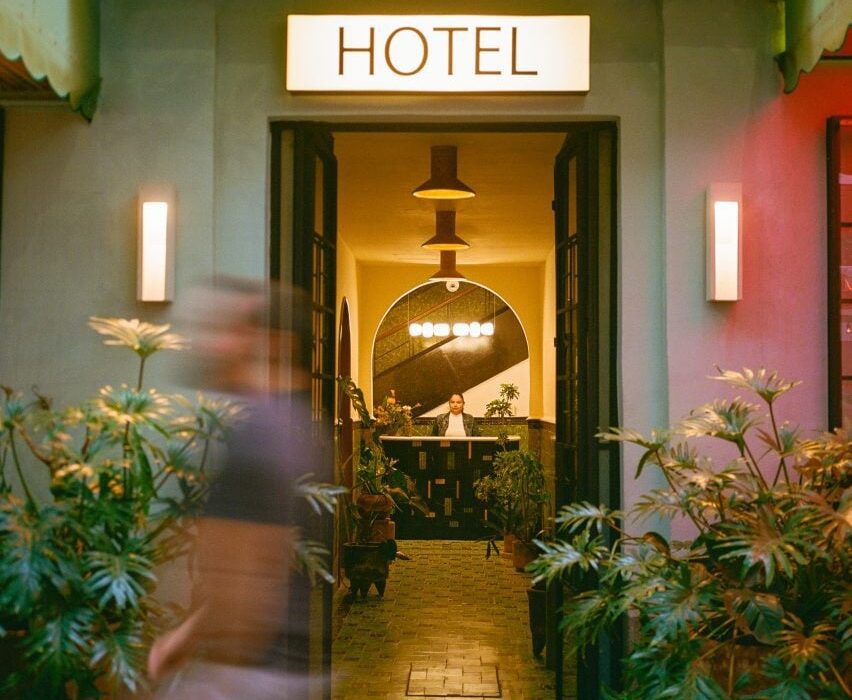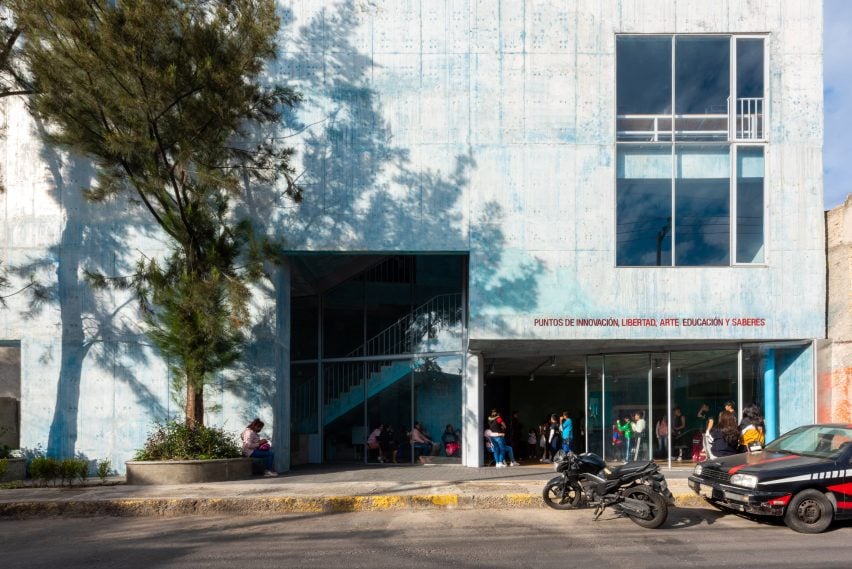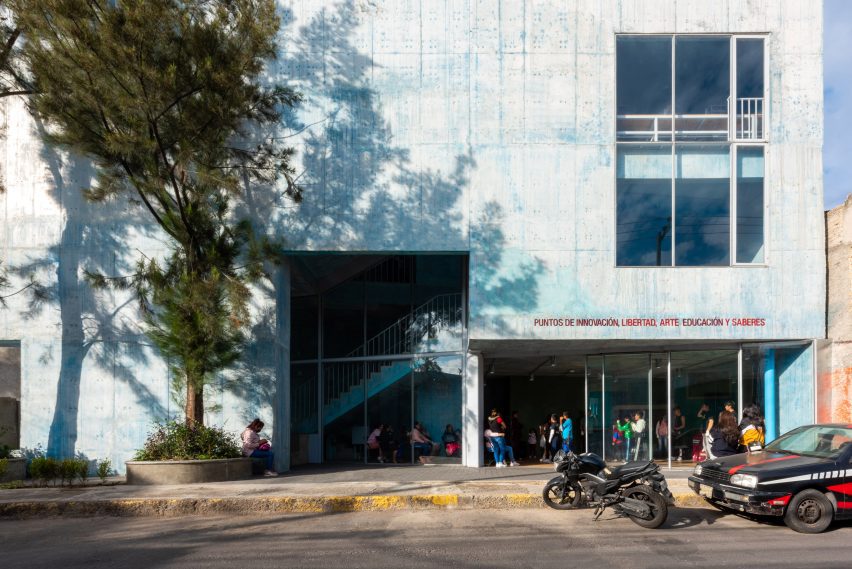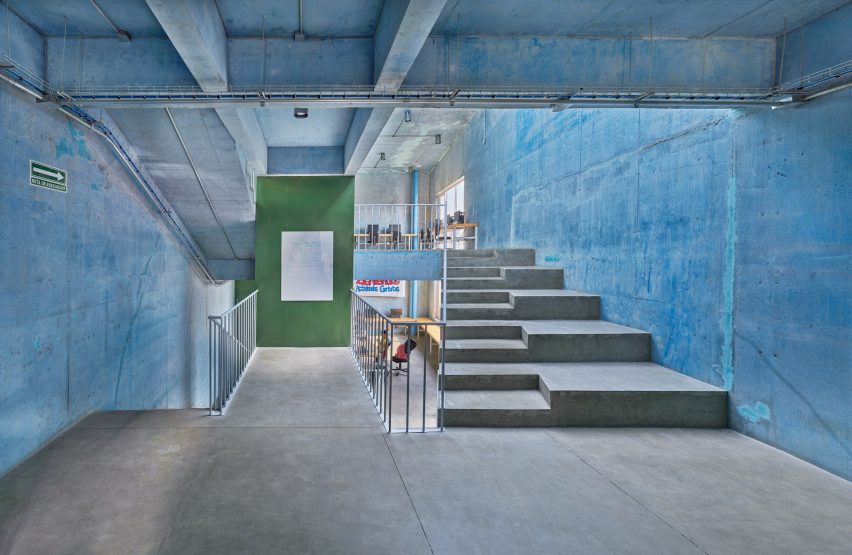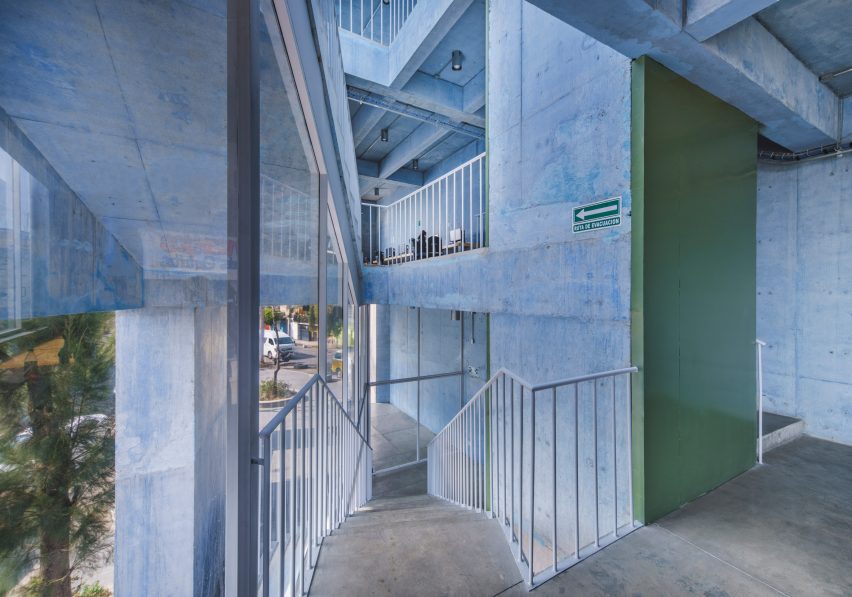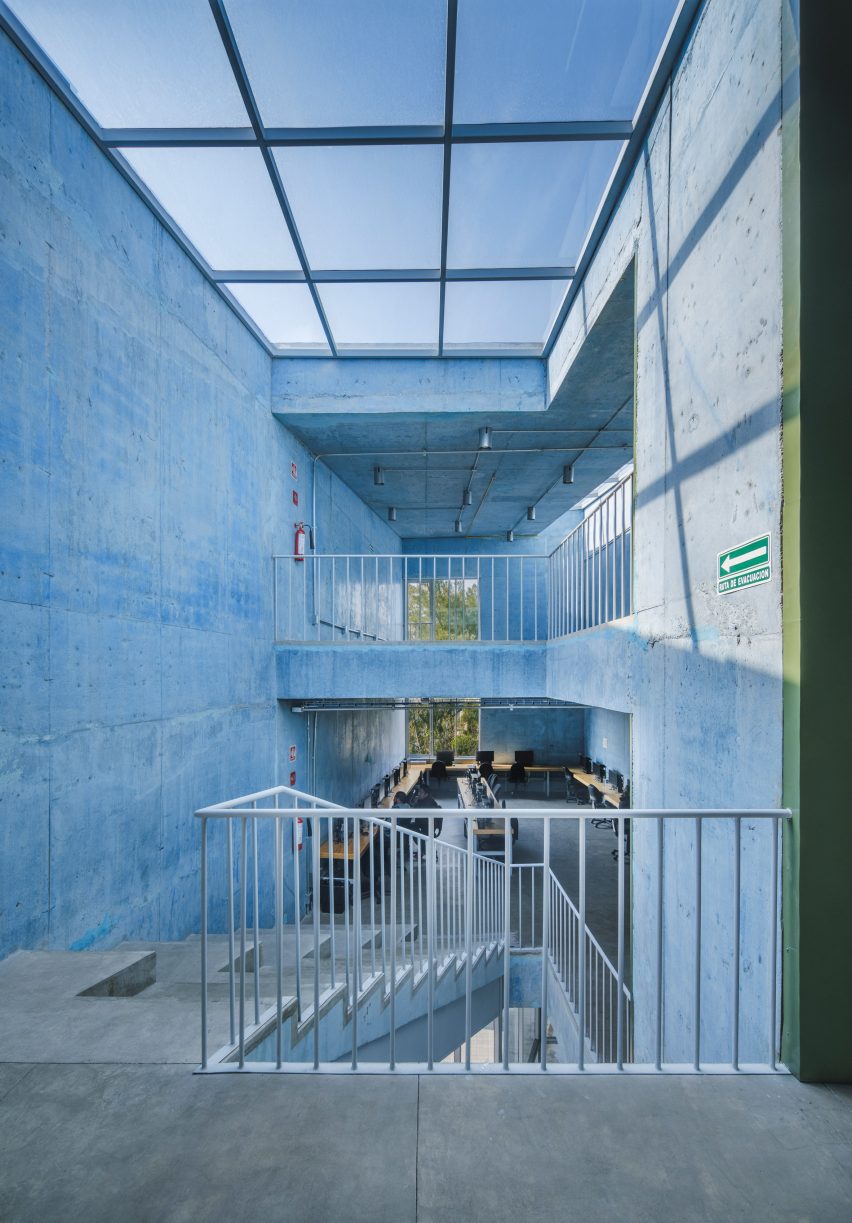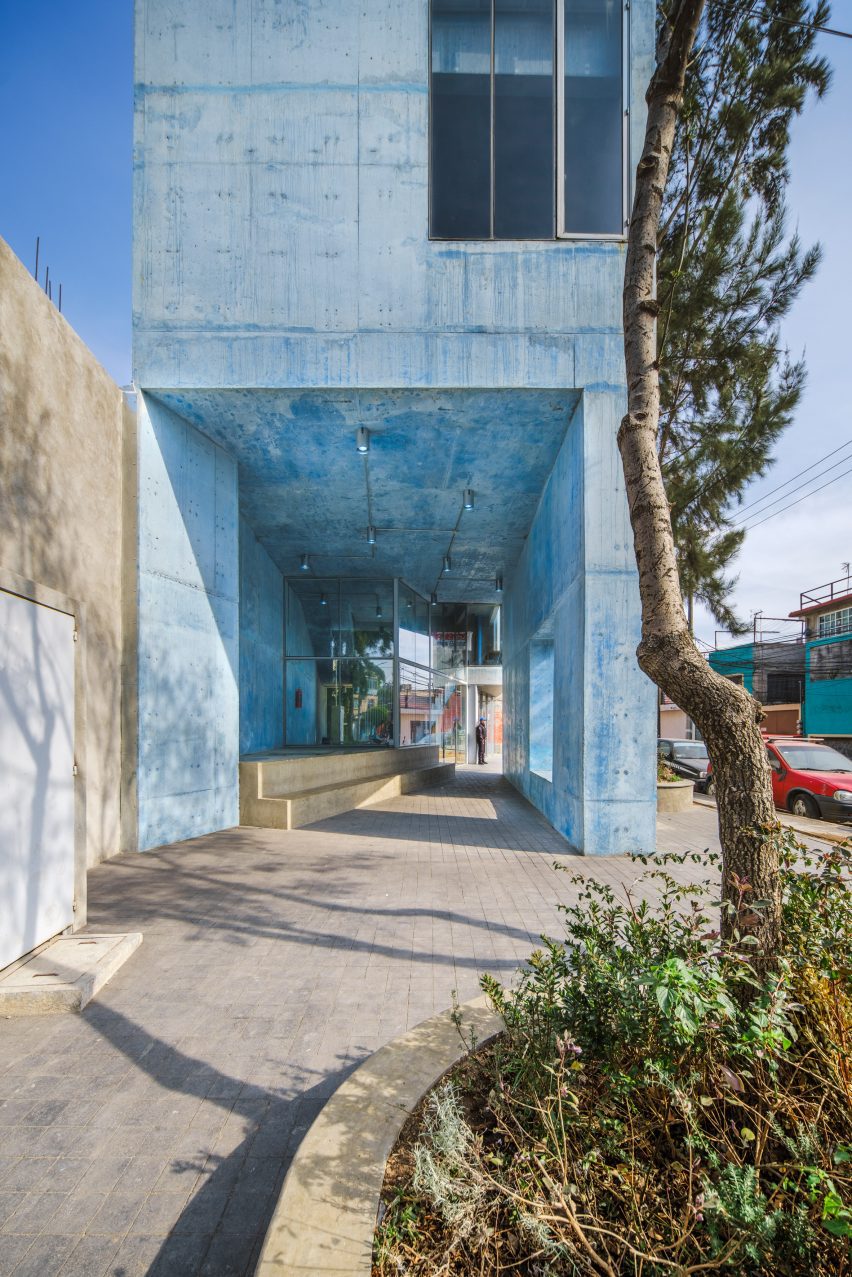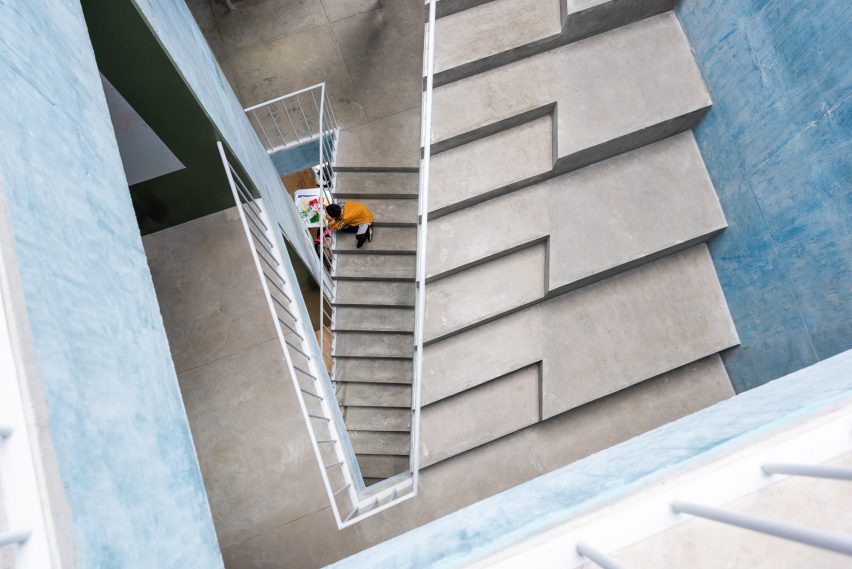Bunkhouse and Reurbano convert Mexico City building into boutique hotel
American hotel brand Bunkhouse and interior design studio Reurbano have used motifs derived from the history of a Mexico City structure when converting it into a boutique hotel.
Hotel San Fernando is located in the Condesa neighbourhood of Mexico City, a largely residential zone that in recent years has seen an influx of national and international travellers.
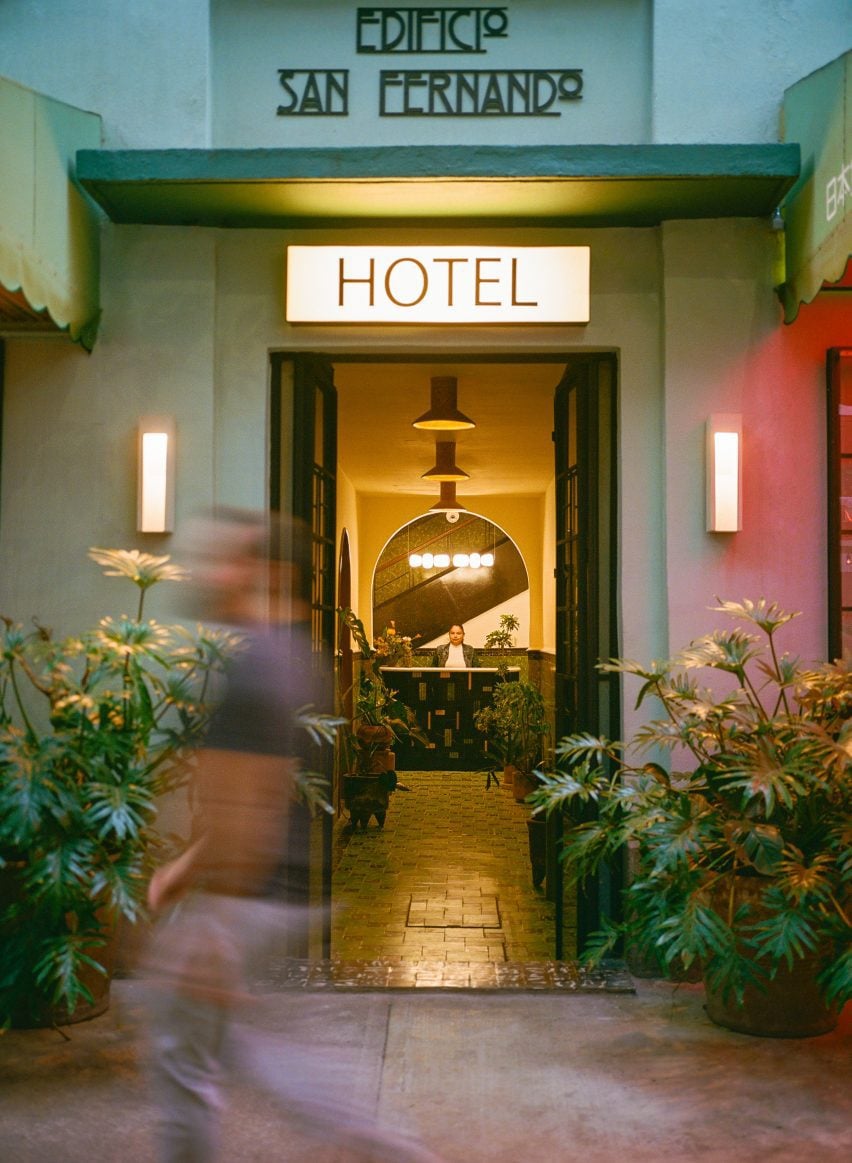

Bunkhouse worked with local interior design studio Reurbano to take a 1940s apartment building and convert it into a 19-room hotel, with finishes informed by the neighbourhood.
The face of the structure was restored and painted a light green, with darker green used on the awnings that provide coverage for seating attached to the hotel’s lobby and restaurant, which open to the street through glass-paned French doors.
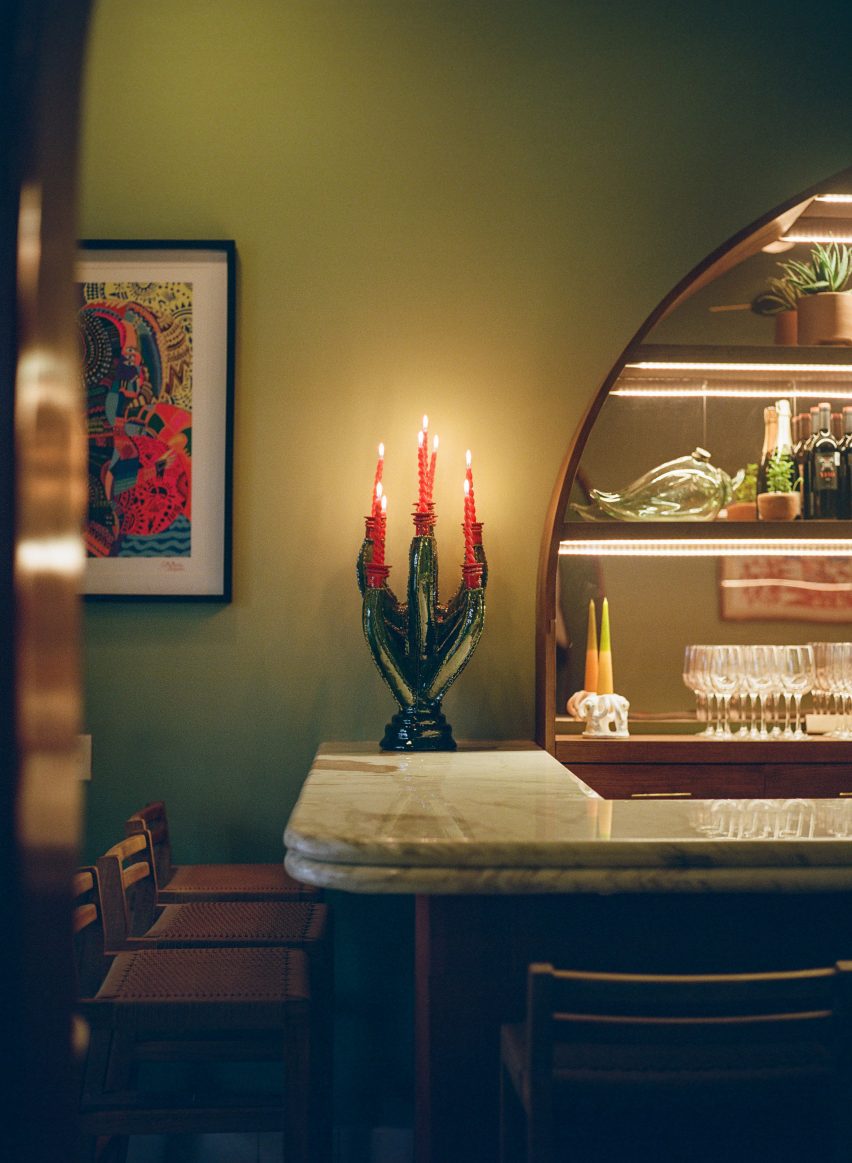

An art deco-style logo spells out the name of the hotel above the door. Saint Fernando is known as the patron saint of engineers, and the team wanted to highlight this by maintaining the name of the original building in the branding of the new structure.
“We wanted to honour this building,” said Bunkhouse senior vice president of design Tenaya Hills.
“We love the story and the history and like to imagine what it has been for people over the decades.”
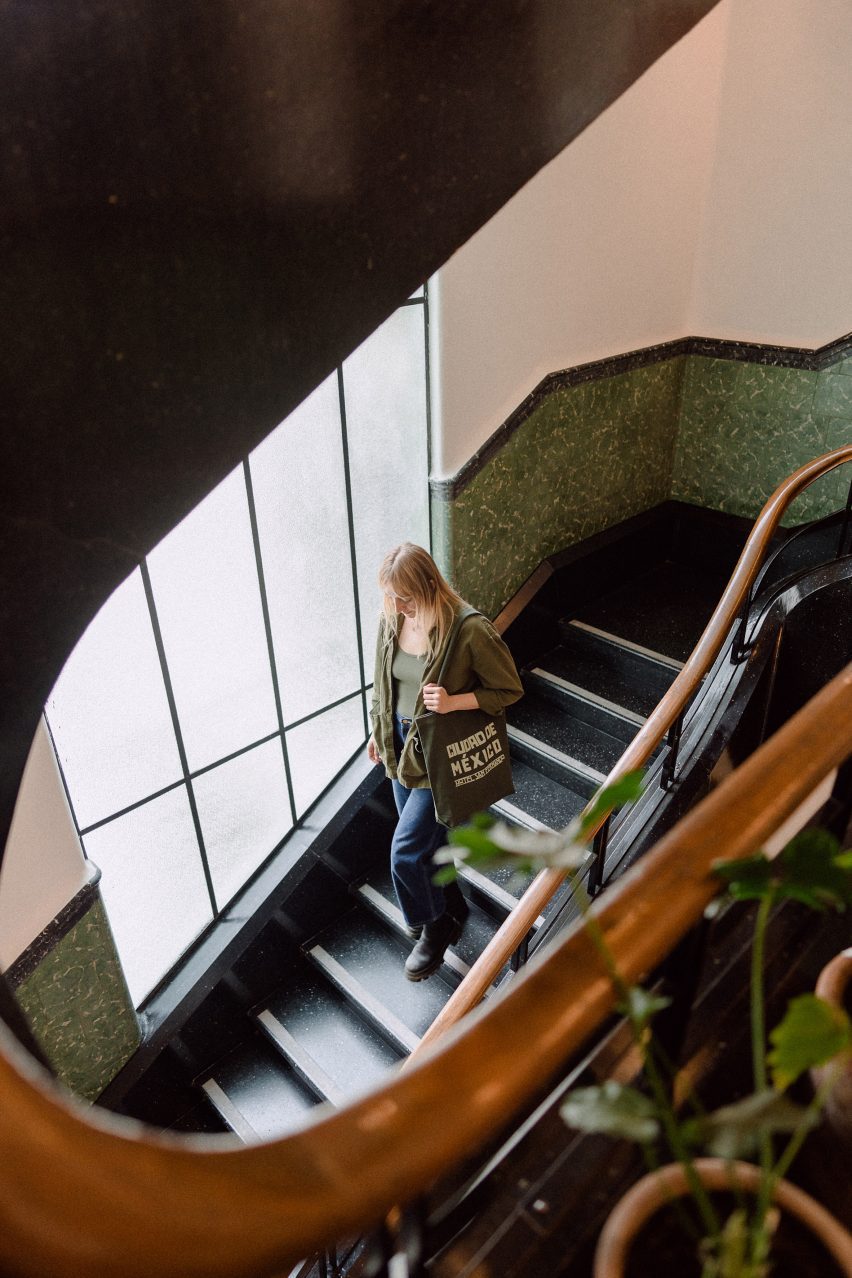

This primary entrance features a metal door with glass panes informed by the original stained glass of the building.
The entry corridor leads past a lobby lounge, with lighting by Oaxaca studio Oaxifornia and furnishings by local gallery Originario; and design studios Daniel Y Catalina, and La Metropolitana, which also created custom furniture for all of the guest suites.
At the far end of the lobby lounge is the restaurant’s bar, which features a large semi-circular cabinet with mirrored back to hold the spirits. A chandelier by local sculptor Rebeca Cors hangs above the clay-clad bar.
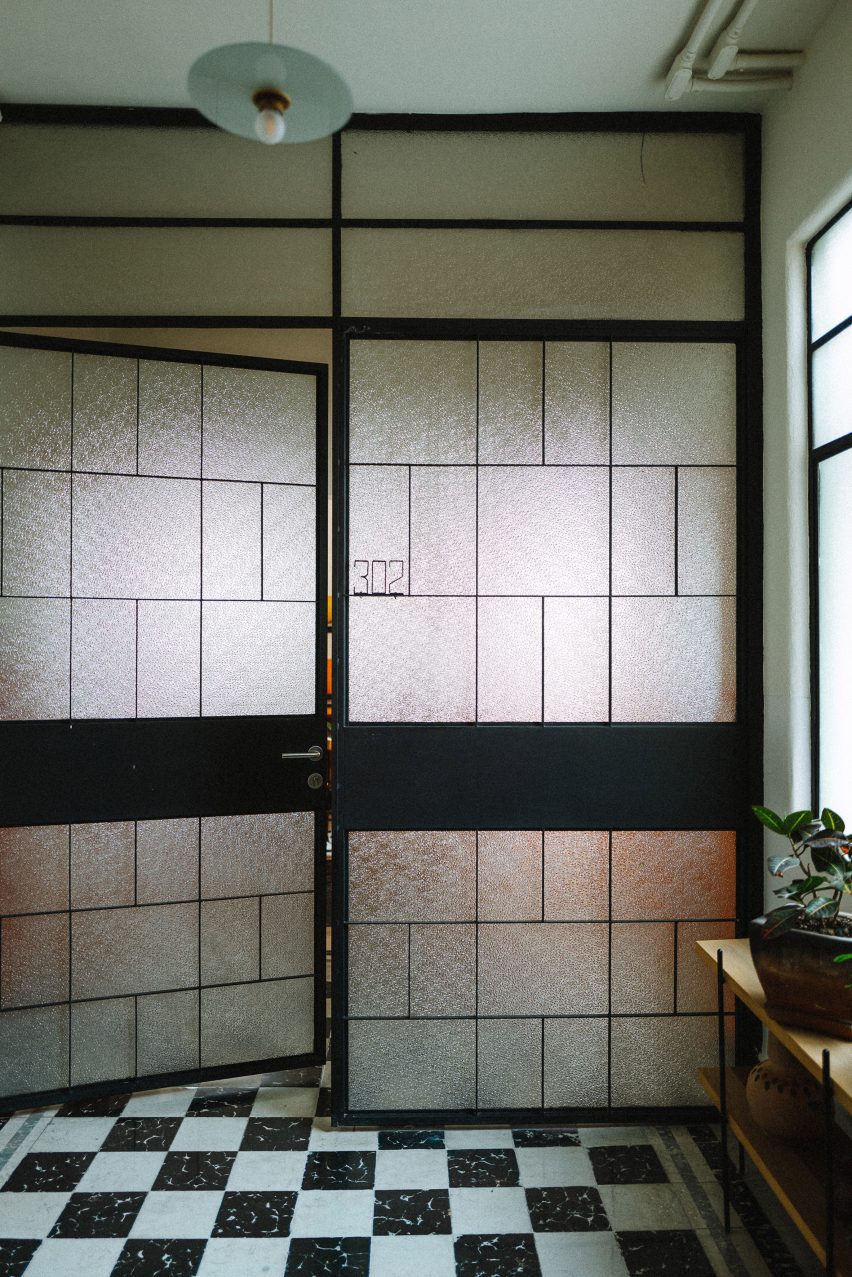

The entrance corridor has green encaustic concrete tiles from the original building. Other original details include the wainscotting and casement windows.
A reception area is located at the end of the corridor and behind it is a circular staircase with metal-and-wood railing that leads all the way up through the building, with landings on each of its five floors, terminating at a terrace on top of the building.
The guest rooms range from single-room setups to multi-room suites, the largest of which are accessed through French doors with opaque windows.
Here the studio departed from the greens used on the exterior and the lobby and utilised soft orange, pink and white paints.
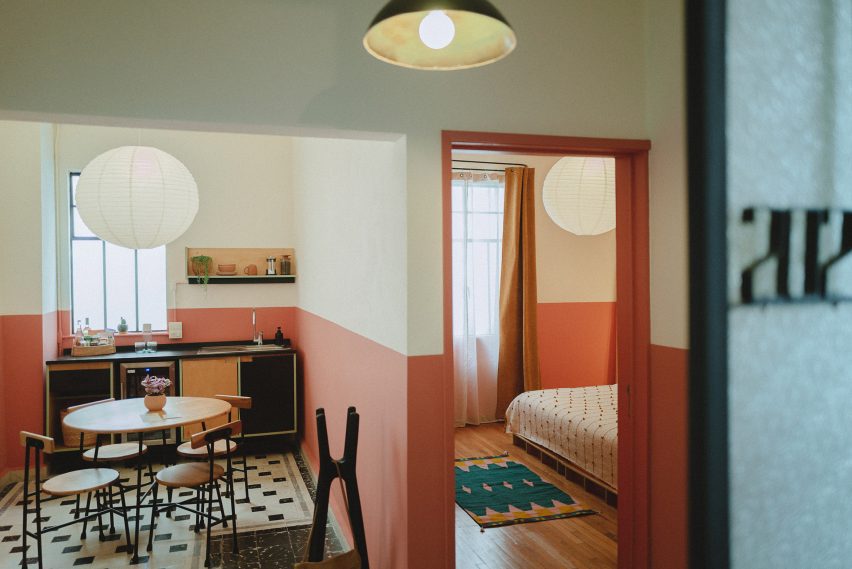

Floors in the rooms are either tile or wood and furniture made from light-coloured wood is covered by locally derived textiles. Three rooms on the rooftop level feature furniture designed by Bunkhouse and fabricated by local design outfit B Collective Studio.
Pendant lamps and sconces by local ceramicist Anfora are found in the kitchens and bathrooms.
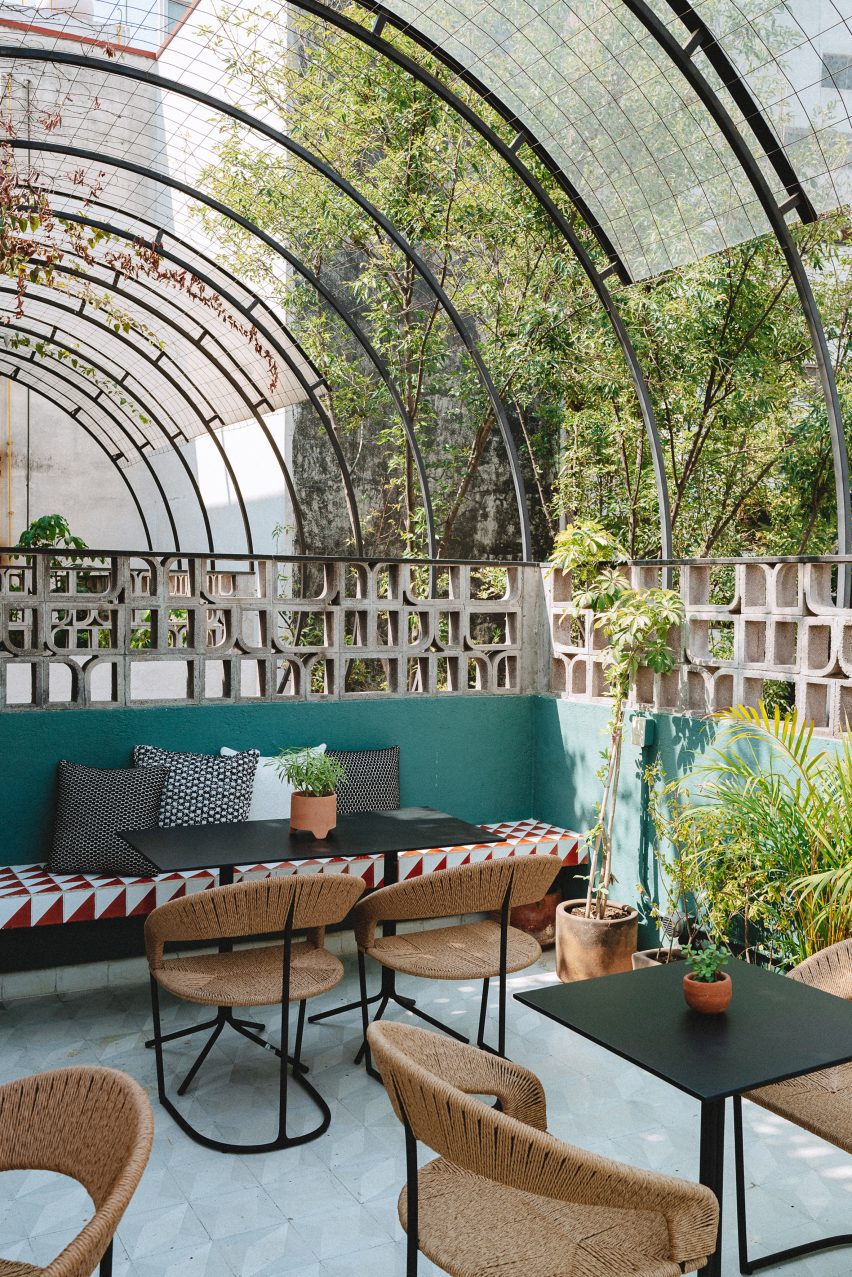

The rooftop features a tiled dining and lounge area surrounded by sculptural breeze blocks, designed to mimic the original building’s patterned stained glass.
Mexican design studios Mexa and Comité de Proyectos contributed furniture pieces for the rooftop.
Other hotels in Mexico include a tile-clad structure in San Miguel de Allende by Productora and Esrawe Studio and a hotel in Mexico City with wooden lattices by PPAA.
The photography is by Chad Wadsworth.

